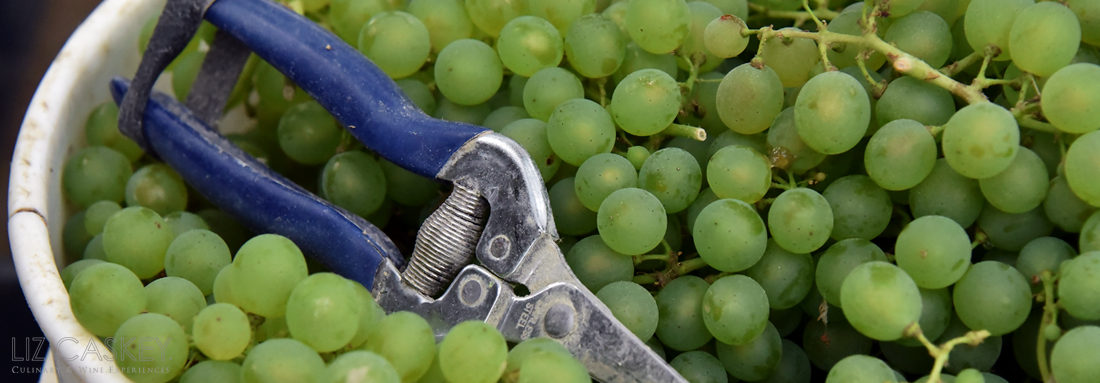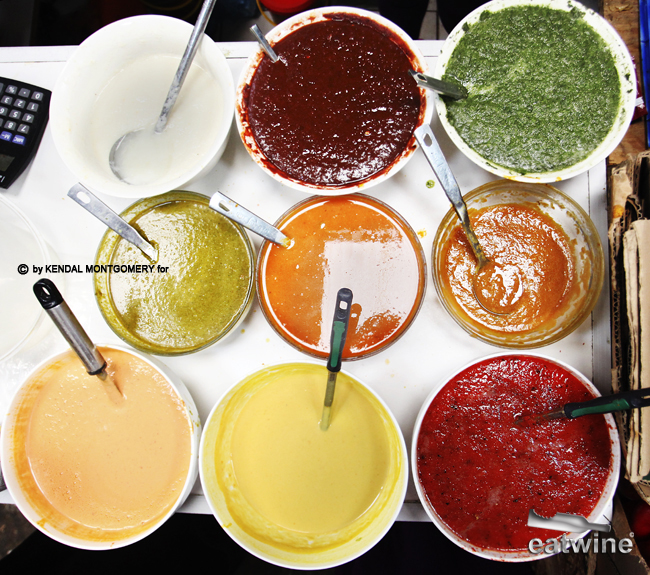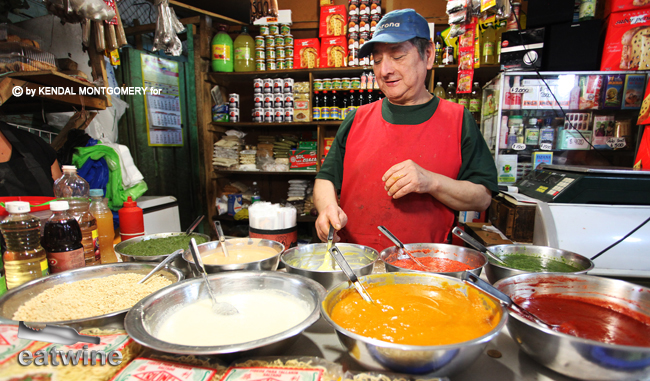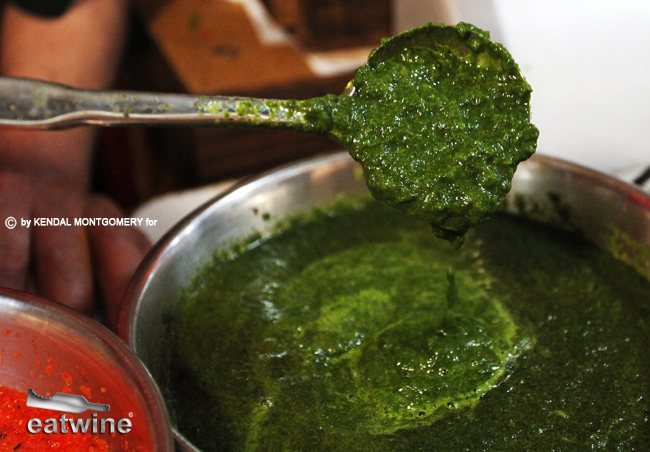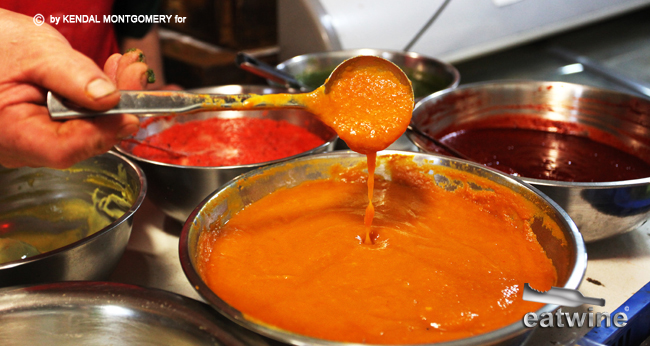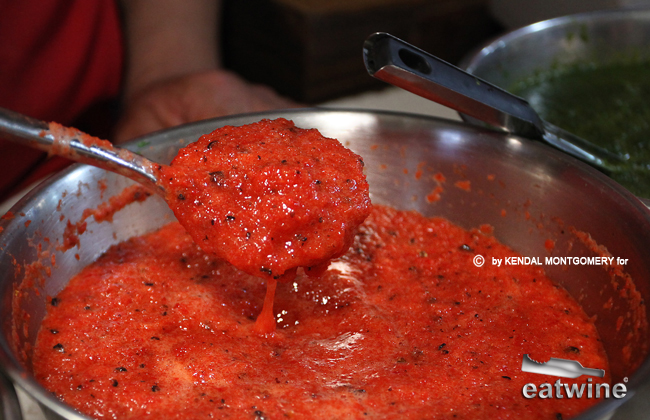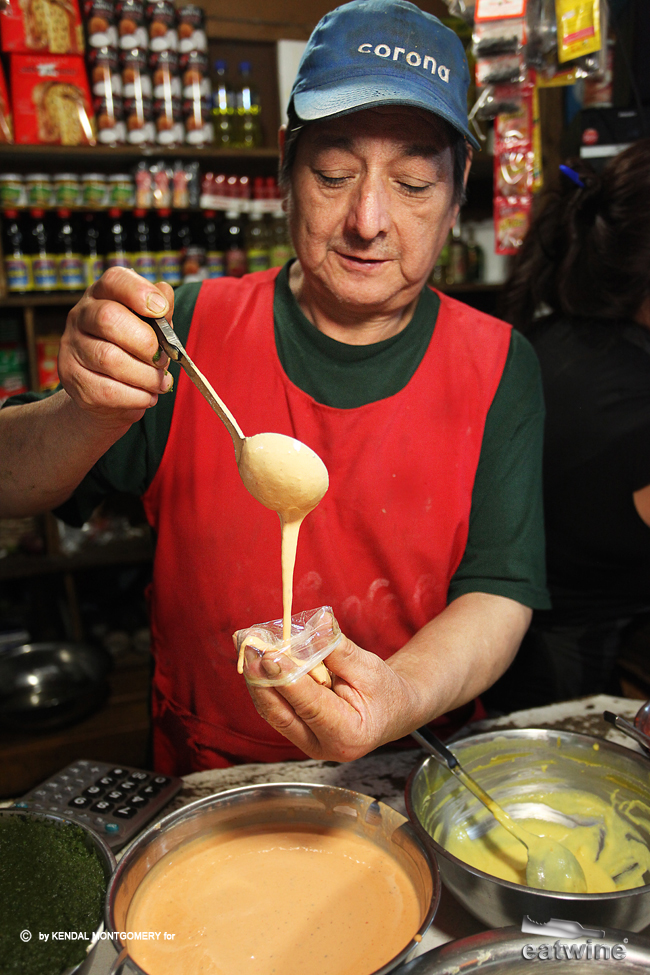One of the things I love about Peruvian cuisine is the abundance of sauces for everything. Piquant chili sauces to accompany their aromatic roasted chicken, creamy sauces to pair with boiled potatoes, and even fiery sauces to give anything a serious kick.
In Santiago, Peruvian immigration to Chile is by far the most numerous. As such, there has been an influx of exotic ingredients from their cuisine, which is quickly being integrated to the Chilean palate as many immigrants work in domestic service. Today, there are over 80 Peruvian restaurants in the capital ranging from elegant, sophisticated classics like El Otro Sitio to favorite joints like El Ají Seco.
So where do locals go to load up on all the food staples? La Vega, of course. In fact, there is now an aisle dedicated to all Peruvian ingredients from Andean potatoes to noodles for chifa cuisine; fresh huacatay and yucca to chili pastes and La Gloria evaporated milk (they swear by this!)…and then you have the condiments. I am all about sauces and thankfully, I have a caseros that only specialize in making them to give depth, kick, and zestiness to the food.
Here’s a low down of the common sauces used in Peruvian cuisine. Be adventurous and try them. You will back for more, trust me.
Salsa de ajo: Straight up garlic pureed with a little water. This forms the base of many sofritos, where shallot and garlic are sautéed in oil before adding in the yellow chili paste. Use for everything (even colds!).
Salsa de Ají Panca: This cherry red sauce is made from reconstituted panca chilies, typically dried, and has an earty, flavorful taste that is not spicy and reminds me of the consistency of tomato paste. I use this in chupe de camarones, shrimp chowder and as the marinade base for the famous Peruvian roasted chicken.
Salsa de Cilantro: Shown above, cilantro is pureed and this is added to many rice dishes like arroz con pollo or arroz con pato, or you can drizzle it over ceviche, toss with noodles. Peruvian pesto if you will.
Salsa de Huancaína (shown in picture): Yellow chilies, known as huancaínas, in Peru are the soul of their cuisine. I am in love with these orange-colored gems (even though they’re called “yellow). While they have heat, it is not overwhelming and is incremented with calculated use. In small doses, it has a floral, tongue-dazzling flavor that is the base for many of the recipes like tacu tacu or ají de gallina. Give you a test run for yourself (by the way, you can buy this in jars at Latin Markets). Just sautée a little garlic, shallot in oil and then fold in 1 tablespoon of this stuff. Or do the same in a vinaigrette. Add to rice, fish, beef, and let your creativity run while. In the markets, they often have two versions, one from dried chilies and one fresh. Obviously the fresh chilies pack more potency.
Salsa de Huancaína-Cilantro: This cilantro-chili sauce is used to dip your roasted chicken, or anything, in it. When pressed, my caseros would not reveal the secret ingredients to account for the complexity of this sauce. Let’s say while cilantro and yellow chilies are the base, there’s a lot happening. Reminds me of those glorious “green” chutneys I am obsessed with in Indian cuisine.
Salsa de Rocoto: This is the prettiest sauce of all, pure red flecked with black as captured here. Beware, those are seeds and rocoto is pretty much the scotch bonnet of the Peruvian chili universe. This sauce will tear the tastebuds right off you tongue if you don’t respect it. You’ll be panting, screaming for milk or chocolate to put out the fire. We’ve had many a macho client claiming to have a tongue made of steel be humbled by this petit red pepper. How to use it? With an eye dropper. A little goes a long way.
Crema de Rocoto: My casero is pouring me out a portion of the above-feared chili which he has tamed with the cream into and addictive dipping sauce for plantain or sweet potato chips. This sauce also pairs well with chiparrones, fried squid, and can add a flash of flavor to any dish without a visit to the ER.
Crema de Huancaína: While I am not big into cream anything for caloric reasons, all bets are off with this sauce. Yellow chilies are blended with single cream and ap inch of salt into this smooth, pale yellow sauce called heaven. How they use it? Boil up some potatoes and slice, then cover and top with bitter olives (like Kalamata) and a sliced hard-boiled egg. This classic dish is called papas a la huancaína.
Peru is truly set for 2012 to become the next big world cuisine, just like Spain or Korea. Want to experience it first hand for yourself? Join me and a small group of like-minded foodies in Peru in June & September 2012 on Flavors of Peru to get the insider scoop for yourself on why this cuisine is so intriguing. Email us at info@lizcaskey.com for more information or call +1 904 687 0340.
